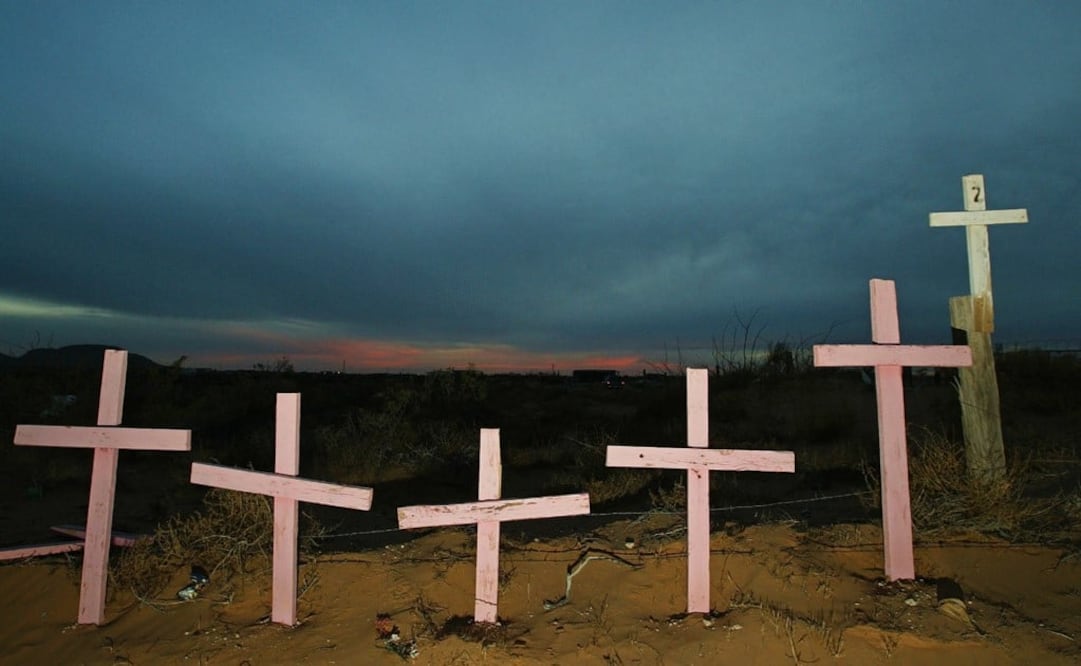Más Información

“Las Fuerzas Armadas, en la democracia, se quedan en cuarteles”: Alexis Goosdeel, director de la Agencia de la UE sobre Drogas

El ganador del aumento de los aranceles de EU es México: Wall Street Journal; exportaciones mexicanas llenaron vacío que dejó China
According to international reports and research centers consulted by EL UNIVERSAL, Mexico is one of the countries where women are mistreated the most; moreover, there is a gap between public policies and its effective implementation.
The Women Peace and Security Index 2019/20 , issued by Georgetown University, ranks Mexico in the 103rd place in women’s well-being and empowerment . The study explores economic, social, and political inclusion, as well as justice, discrimination , security, among other factors.
Moreover, Latin American and Caribbean countries performed better than Mexico in the ranking, for example: Venezuela (84), Nicaragua (88) y Argentina (48). Meanwhile, the worst-ranked country in the region is Haiti.
In contrast, the best countries for women are Norway, Switzerland, Finland, Denmark, Iceland, Austria, United Kingdom, Luxembourg, Sweden, Netherlands, Canada, and Estonia.
On the other hand, in the Ipsos report “ Feminism And Gender Equality Around The World ,” Mexico is among the countries where women feel that there is gender inequality : 46% of inhabitants considered that there is work left to do in that area. The country is also among the 5 countries where people think it hasn’t achieved equality.
According to the 2019 US News & World Report , Mexico was the 60th best country to be a woman. The country is surpassed by China, Russia, Qatar, Saudi Arabia, The United Arab Emirates, and many more countries in the 2020 ranking.
The United Nations has confirmed that in 2019, at least 10 women were murdered in Mexico every day .
Recommended: Mexican women face harsher prison sentences
According to the OECD , “Mexico is one of the OECD countries with the highest levels of violence against women . In Mexico, 63% of women over the age of 15 say they have been victims of some type of violence during their lives.”
According to the Observatory of Gender Equality ( OIG ), under the Economic Commission for Latin America and the Caribbean ( Cepal ), Mexican women face labor, social, and economic discrimination, as well as femicides. According to numbers released in 2018, Mexico is the second country with the most femicide cases, only after Brazil.
In regards to reproductive rights and health , Mexico is lagging behind. In recent years, maternal deaths have increased, despite Mexico’s commitment to reduce the mortality rates .
According to reports from July 2019, Mexican women occupied 36.4% of the President’s cabinet ; this is the fourth-highest percentage in Latin America and the Caribbean and it also contrasts with numbers from 2018, when only 18.8% were women. Moreover, only 18.2% were female magistrates at the Supreme Court i n 2018, the fifth-lowest number in the region.
According to the observatory, the participation of women as lawmakers increased from 14.2% in 1997 to 48.2% in 2019.
In regards to mayors, the number increased from 3.3% in 1998 to 21.6% in 2018.
Recommended: Fisherwomen: trapped in the net of inequality
The Gender Inequality Index measures gender inequalities in three important aspects of human development: reproductive health , empowerment , and economic status . It ranked Mexico in the 76th position in its Human Development Index .
In January 2019, the head of the OECD , José Ángel Gurría, said that “women still receive a less fair treatment than men (…) They face more obstacles to joining the labor market, they suffer a high degree of harassment, and earn 14% less.”
In regards to unpaid work, in 2014 the OIG showed that Mexican women over 15 worked for 20.5, while men worked 45 hours a week.
Meanwhile, 41.9% of Mexican women perform unpaid work , while only 14.7% of men do. Furthermore, in 2014 poverty increased by 31.5% in rural areas and 39.4% in urban areas; in 2016, it increased to 44% and 45.3% respectively.
Although between 2000 and 2018 the number of unemployed women in urban areas decreased, numbers from the OIG show worrying figures: it went from 49.8% in 2000 to 25.8% in 2018, in contrast, in men it went from 9% to 5.6%.
A report released by the World Health Organization in 2003 emphasizes that physical and sexual violence at the hands of a work colleague prevails in the Americas.
signed the Optional Protocol to the Convention on the Elimination of All Forms of Discrimination Against Women in 1999 and ratified it in 2002.
Recommended:
gm
Noticias según tus intereses
[Publicidad]
[Publicidad]












